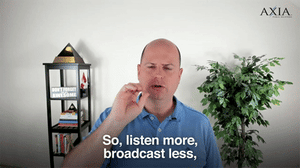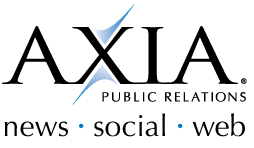Active listening can boost PR efforts and help you on a daily basis
 Listening and broadcasting are two of the most fundamental elements of communication. However, in the world of public relations, it’s easy for PR beginners to simply broadcast over and over, never listening to what’s going on around them. PR pros know that listening is not only important, but there’s a specific kind of listening you should be doing for PR success: active listening.
Listening and broadcasting are two of the most fundamental elements of communication. However, in the world of public relations, it’s easy for PR beginners to simply broadcast over and over, never listening to what’s going on around them. PR pros know that listening is not only important, but there’s a specific kind of listening you should be doing for PR success: active listening.
Audio: Listen to this article.
At its core, active listening isn’t just hearing what people are saying; it’s understanding what they truly mean when they speak, and using that information to be a better communicator in general. Sometimes this looks like reflecting what a person has said back to them, but it can also be simply not speaking when someone else is talking.
When you’re an active listener, you’re demonstrating that you’re engaged and that you understand what the speaker is talking about. This not only helps the speaker feel that you care and are interested in what they’re saying, but it also fosters more engaging conversations and discussions since you’re getting to the heart of what the person is talking about.
Active listening is an invaluable tool for great public relations. Here’s a breakdown of how you can use active listening in the PR content creation process:
- Listen to your audience
- Create communication based on what the audience has said
- Begin with empathy for the audience
- Lead the audience toward a solution
It sounds simple, and it is — as long as you actively listen to what your audience is saying, develop the analytical skills necessary to understand what they really want, and formulate a message that conforms to what they’ve communicated to you.
Here’s an example of active listening as it applies to public relations:
Say you’re a B2B company that works in the construction industry. After a bit of data gathering, your PR department notices that the companies that use your services are having problems getting paperwork completed in a certain region where you work. A review of your company’s services notes that your company is effective at filling out the paperwork in that same region where clients are having issues.
Now that your PR department knows about the problem, they begin to craft communications to target the audience.
Their communication plans break down into three elements:
- Empathize with the audience when it comes to the difficulties they’re experiencing — in this case, filling out paperwork to begin a construction project. (Start with empathy.)
- Acknowledge that getting the paperwork done in that region is difficult. (Show that you’re listening to your audience and their problems.)
- Discuss your great track record in completing paperwork for the region where your clients are having a hard time. (Lead your audience toward a solution.)
The PR program ends up being a success, with your company earning several new contracts from people in that region, all because your company’s PR department used active listening to make sure they knew they were heard.
Active listening is a critical skill when it comes to any kind of communication. Whether it’s listening to a co-worker discuss a project or formulating a new public relations strategy, active listening is key for great communications.
 Clients love Jacob’s speed. Jacob is an inbound marketing-certified webmaster. He earned an integrated communications degree from Florida State College at Jacksonville. Jacob joined Axia PR as an intern in August 2015 and earned his way into a critical role at our PR agency.
Clients love Jacob’s speed. Jacob is an inbound marketing-certified webmaster. He earned an integrated communications degree from Florida State College at Jacksonville. Jacob joined Axia PR as an intern in August 2015 and earned his way into a critical role at our PR agency.
Topics: PR tips, communications



Comment on This Article